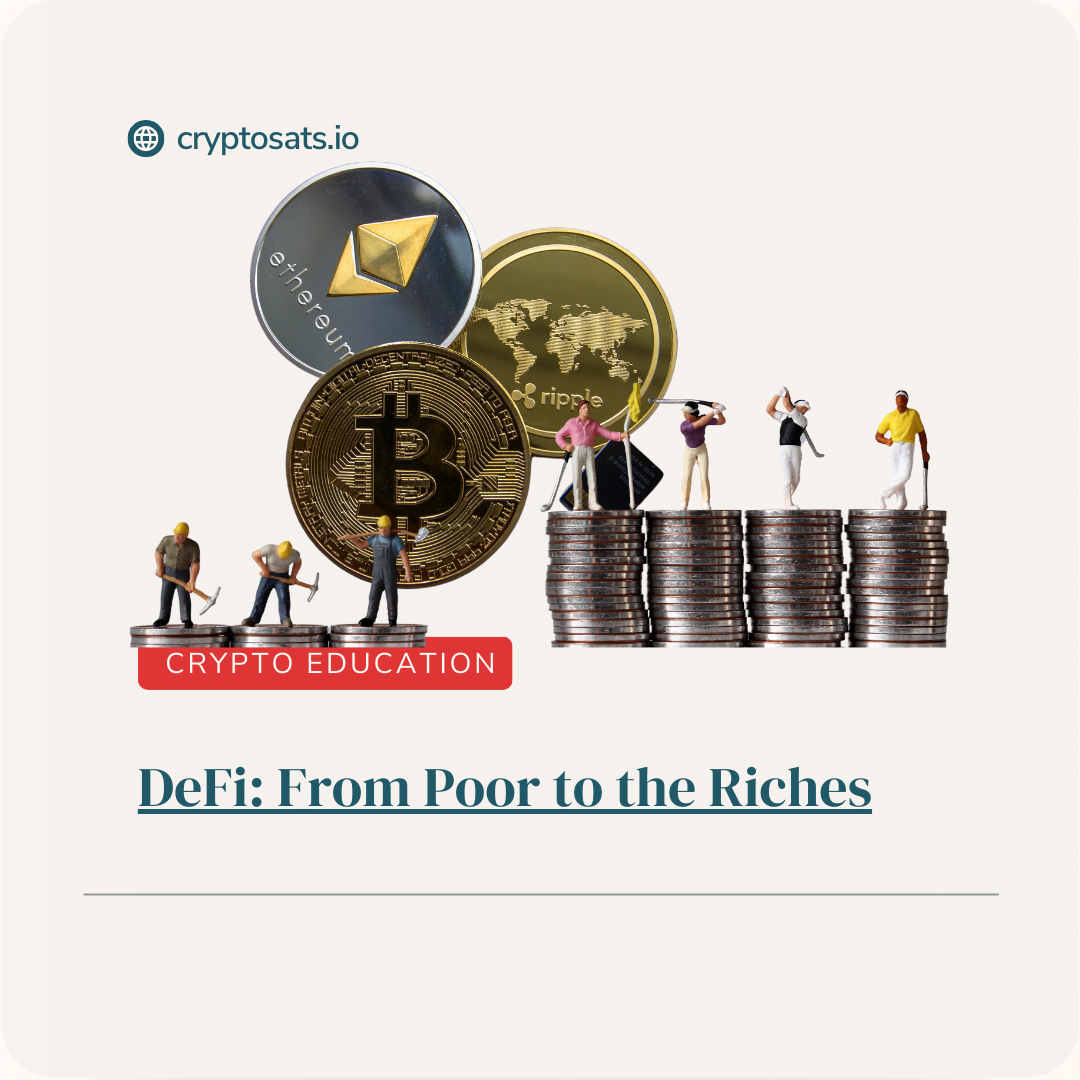Decentralized Finance (DeFi) has emerged as a transformative force in the financial landscape, reshaping traditional notions of banking and finance. This revolutionary concept leverages blockchain technology to provide financial services in a decentralized manner, granting users greater control and autonomy over their assets. In this blog we are going to explore, we’ll delve into the essence of DeFi, exploring its merits, potential pitfalls, and the dynamic impact it continues to have on the world of finance. There is a lot of money to be made in DeFI. So let’s get the basics right!
What is Decentralized Finance (DeFi)?
At its core, DeFi represents a shift away from centralized financial systems towards a decentralized, peer-to-peer framework. You can see DeFI as a financial superhero, breaking free from the shackles of centralized systems. No more relying on traditional banks or financial bigwigs.
Instead of relying on traditional intermediaries like banks. DeFi leverages smart contracts on blockchain platforms, predominantly Ethereum, to facilitate financial transactions. This opens up a wide array of financial services, including lending, borrowing, trading, and yield farming, accessible to anyone with an internet connection and a cryptocurrency wallet.
The financial advantages of Decentralized Finance
Financial Inclusion:
- DeFi is a game-changer in promoting financial inclusion. By eliminating the need for intermediaries, it allows individuals who were previously excluded from traditional financial systems to have access a plethora of services. For example you don’t need to show your financial history in order to open a account for trading crypto , stocks or commodity.
Easy Acces:
- Traditional finance often comes with barriers to entry, such as complex documentation and geographical restrictions. DeFi, being built on blockchain, enables global access. Anyone with an internet connection can participate, transcending borders and traditional limitations.
Transparency:
- The blockchain, as the underlying technology of DeFi, ensures transparency. Every transaction is recorded on the blockchain, providing an immutable and publicly accessible ledger. This transparency mitigates the risk of fraud and enhances trust within the ecosystem.
Interoperability:
- DeFi projects often operate on the same underlying blockchain infrastructure, fostering interoperability. This means users can seamlessly move assets and data between different DeFi applications, creating a more connected and efficient financial ecosystem.
Smart Contracts and Automation:
- Smart contracts, self-executing agreements with the terms of the contract written directly into code, automate processes in DeFi. This reduces the need for intermediaries, streamlining operations, and minimizing the potential for human error.
Yield Opportunities:
- DeFi platforms offer unique opportunities for users to earn yields on their cryptocurrencies. Activities such as liquidity provision and yield farming allows users to earn passive income on their assets.
The disadvantages and risks of DeFI:
Smart Contract Risks:
- While smart contracts provide automation, they also introduce risks. Bugs or vulnerabilities in the code can lead to security breaches or the loss of funds. Several high-profile DeFi hacks underscore the importance of thorough auditing and testing.
Regulatory Uncertainty:
- DeFi operates in a regulatory gray area. The lack of clear regulatory frameworks can create uncertainty for users and developers, potentially hindering mainstream adoption.
Market Volatility:
- Cryptocurrencies, which form the foundation of DeFi, are known for their price volatility. Fluctuations in the value of assets can lead to significant financial losses for users engaged in trading or investing.
Limited User Protections:
- Traditional financial systems often come with safeguards such as insurance on deposits. In DeFi, the absence of such protections means users bear the full risk of their investments, and in the event of a hack or exploit, recovering lost funds can be challenging.
Complexity and Usability:
- DeFi platforms can be complex for new users to navigate. The need for understanding private keys, gas fees, and various protocols may pose a barrier to entry for those unfamiliar with the intricacies of blockchain technology.
Scalability Issues:
- As the popularity of Decentralize Finance grows, scalability becomes a significant challenge. Issues such as network congestion and high transaction fees on popular blockchain networks can impact the user experience.
Conclusion
Decentralized Finance holds tremendous promise in reshaping the financial landscape, providing inclusivity, accessibility, and transparency. However, it is not without its challenges and potential pitfalls. As the DeFi ecosystem evolves, addressing issues like regulatory clarity, security, and user education will be crucial in realizing its full potential. Whether DeFi becomes a cornerstone of the future financial system will depend on how well the industry navigates these challenges and continues to innovate.
Here on cryptosats.io , we write/research as much as possible of every crypto protocol that we come across in the crypto space. So stick around and find out. How we used it for our own benefits.
GMX: Decentralize Finance , trading crypto with leverage up to 50X
Glend: Decentralize Finance for borrowing and lending on crypto assets
Camelot: Decentralize Finance for buying , trading and running hot crypto lp’s for interest
